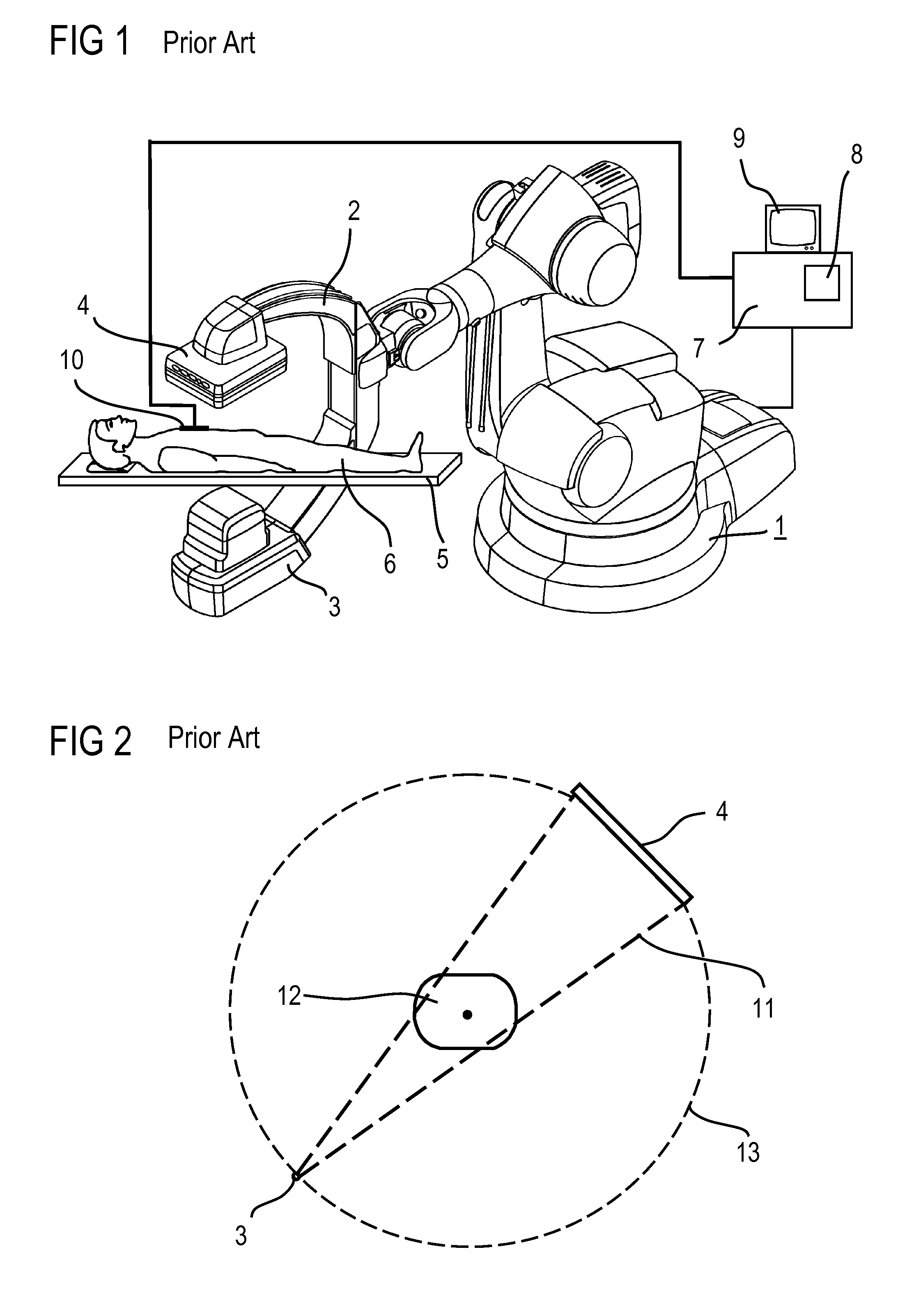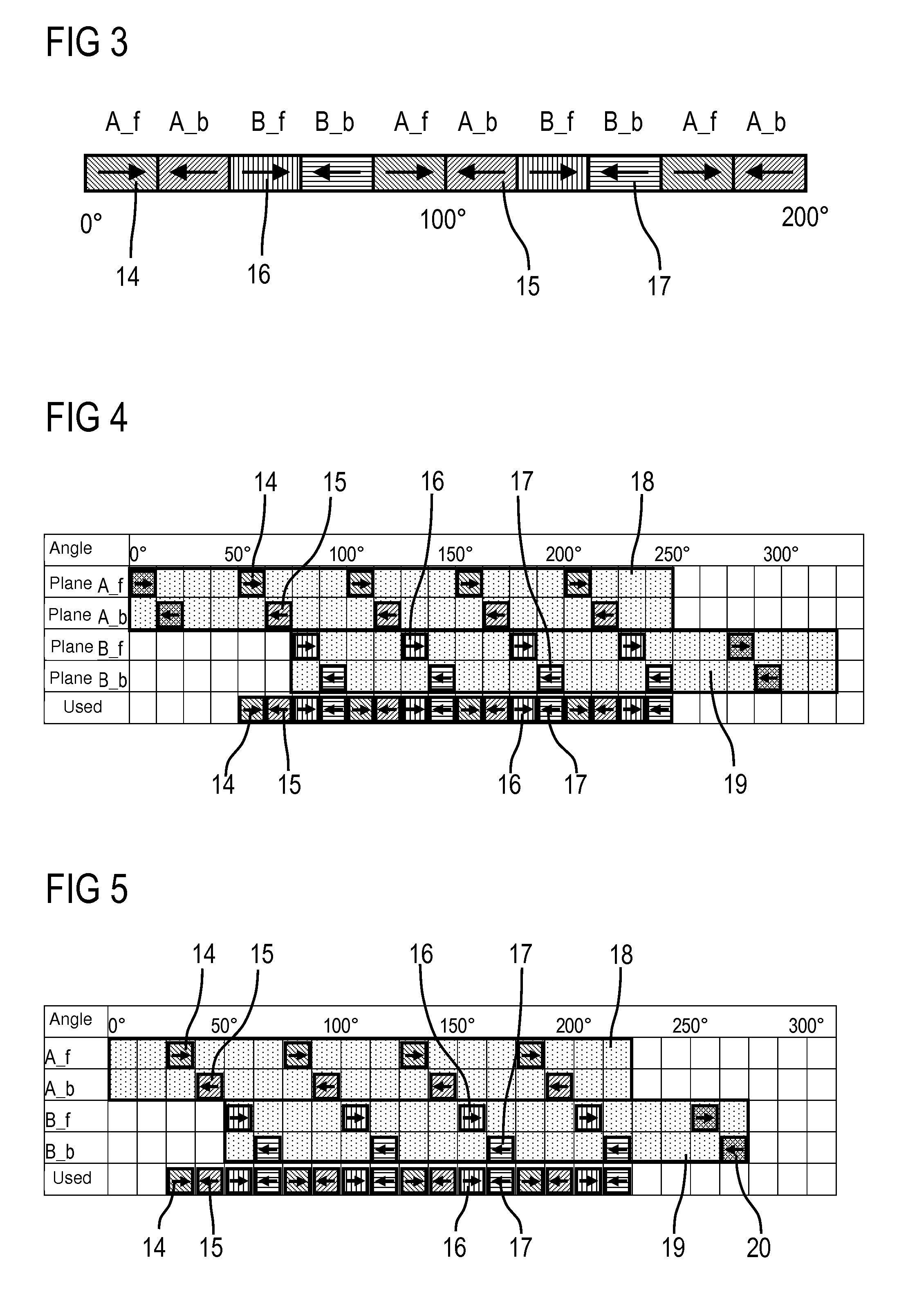Method for 3-D data collection with a biplane C-arm system with biplane acquisition multiplexing
a technology of c-arm system and 3d data collection, which is applied in the field of 3d data collection, can solve the problems of 0 error of corridor, affecting image quality, and thereby affecting the accuracy of data acquisition, and achieves the effect of significantly reducing the acquisition tim
- Summary
- Abstract
- Description
- Claims
- Application Information
AI Technical Summary
Benefits of technology
Problems solved by technology
Method used
Image
Examples
second embodiment
[0066]At the same time in a second embodiment the maximum angle of rotation of the second C-arm plane is to be regarded as a critical parameter, and minimized.
[0067]1. First Inventive Solution Approach
[0068]In a first inventive solution approach the problem is addressed by means of a fan-like division of the recording area into angular areas of the same size. These angular areas are then assigned to the different C-arm planes in a selective manner and linked to fog in an overall acquisition through coordinated dovetailing (Multiplexing (MUX) of the individual recordings. By means of this technique it is possible in future to realize a recording equivalent in quality to DynaCT Cardiac with just two runs instead of with four, using both C-arm planes. The C-arm planes for their part rotate simultaneously at the same speed of rotation in the same direction; they accordingly have a fixed angle to each other, hereinafter referred to as an intermediate angle.
[0069]1.1. Fan Definition
[0070]...
first embodiment
[0193]Course of a complete 3-D-Card-MUX acquisition
[0194]The course of a 3-D-CARD acquisition on a biplane-system takes the following form according to the present patent application:[0195]Determining of the cardiac frequency of the patient.[0196]The intermediate angle of the C-arm planes calculated therefrom is commenced through movement of C-arm plane A.[0197]As soon as the alignment is completed, the calculated start-cardiac phase is awaited and the acquisition of the data commences upon its occurrence.[0198]Both C-arm planes rotate uniformly at the same speed over an angular area of 200°+“min. intermediate angle” and record different angular areas of the patient at different cardiac phases.[0199]After termination of the forward motion, the C-arms wait until the start cardiac phase of the backward motion, and are set in motion upon its occurrence.[0200]After the end of the backward motion the acquisition is completed and the captured data can be reconstructed.
[0201]4.1.1. Sample ...
PUM
 Login to View More
Login to View More Abstract
Description
Claims
Application Information
 Login to View More
Login to View More - R&D
- Intellectual Property
- Life Sciences
- Materials
- Tech Scout
- Unparalleled Data Quality
- Higher Quality Content
- 60% Fewer Hallucinations
Browse by: Latest US Patents, China's latest patents, Technical Efficacy Thesaurus, Application Domain, Technology Topic, Popular Technical Reports.
© 2025 PatSnap. All rights reserved.Legal|Privacy policy|Modern Slavery Act Transparency Statement|Sitemap|About US| Contact US: help@patsnap.com



